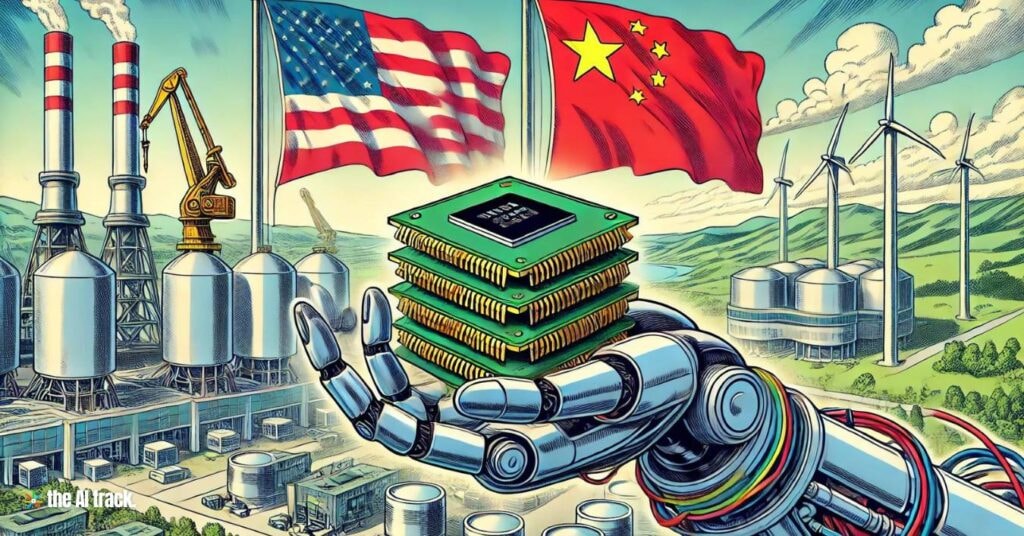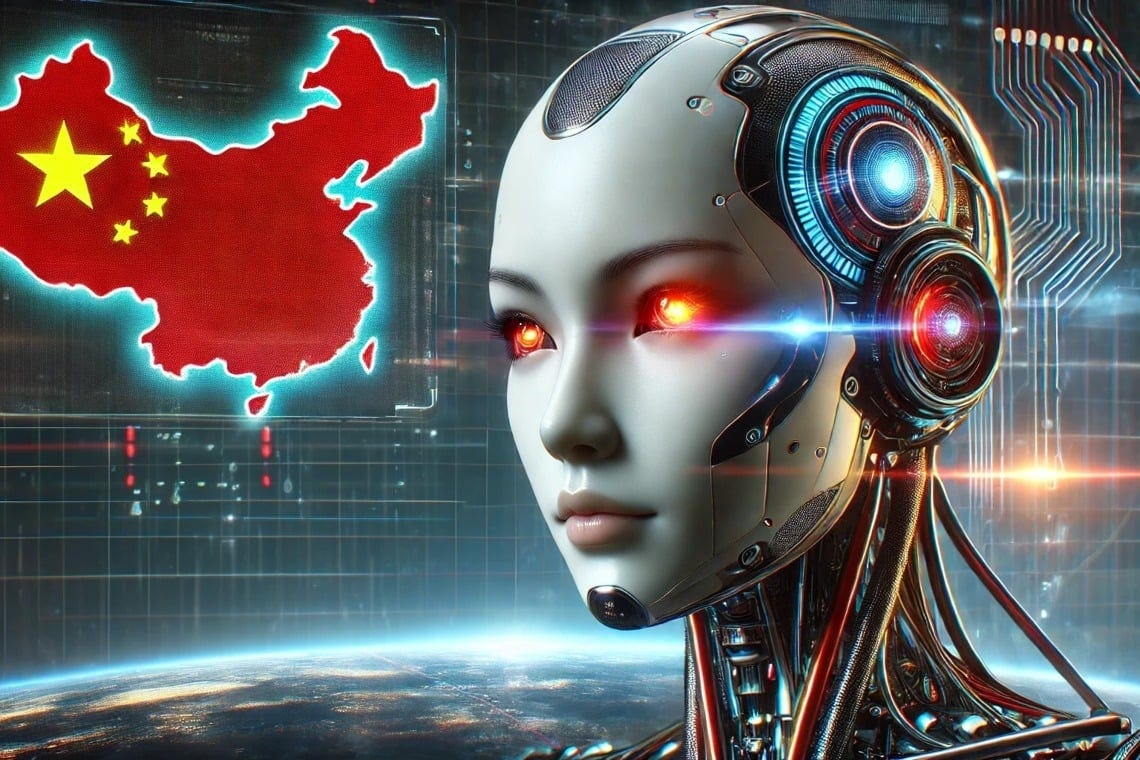The AI Race Between the US and China: Who Will Dominate the Age of Artificial Intelligence?
The US is all about building giant data centers while China is shifting towards results-oriented and inference-based commercial applications.
The global race to build an artificial intelligence (AI)-powered economy is reshaping the way the world operates, from manufacturing and trade to security and geopolitics. Breakthroughs in generative AI and machine learning in recent years have ushered in a new industrial revolution, where computing power has become the new measure of power for nations.
At the center of that race are AI data centers, or “AI factories.” Unlike traditional data centers, these massive facilities house tens of thousands of graphics processing units (GPUs), optimized for training and running massive AI models. They require custom infrastructure architecture, massive amounts of reliable power, and massive capital investment that can only be sustained by a combination of governments, tech companies, and private investors.

AI power is gradually becoming the new economic foundation, where the country with the strongest computing infrastructure will have a distinct advantage in innovation, growth and even military power.
Currently, the US and China are the two biggest competitors in the race to build “AI factories”, but their approaches clearly reflect differences in capacity and economic context.
In the US, the Washington administration is accelerating investment in large-scale data center projects, seeing them as the backbone of its ambition to lead the world in AI. The country believes that mobilizing private sector capital combined with international partnerships will strengthen the US technological position against its rivals.
China, by contrast, is entering a period of strategic adjustment. After a period of intense investment in data infrastructure, Beijing is slowing its expansion, focusing on optimizing capacity utilization amid slowing economic growth and pressure on its chip industry to limit technology from the West.
Regardless of the direction, both powers understand that AI is not just technology, but the new power base of the 21st century. And the race to build an “AI factory” will decide who holds the operating engine of the future economy.
America Bets Big on Data Centers: The Race to Shape the Future of AI Power
The United States is pursuing a comprehensive strategy to cement its leadership in the AI era. In its newly released AI Action Plan, the Trump administration aims to mobilize private and foreign capital to expand computing infrastructure at an unprecedented pace.
Tech giants like Microsoft, Google, Amazon, and Meta are pumping hundreds of billions of dollars into next-generation data centers at home and abroad. In 2025 alone, the “Big Seven” are expected to spend a record $364 billion on building and upgrading computing infrastructure—an unprecedented figure, as this investment contributes more to US GDP growth than total consumer spending, the traditional pillar of the US economy.
One of the most notable projects is Stargate, a $500 billion supercomputer campus jointly developed by OpenAI, Oracle, and SoftBank, which demonstrates the sheer scale and ambition of Washington’s AI revolution. According to economists, capital spending on AI now accounts for nearly 2% of US GDP, equivalent to the scale of the 19th-century railroad boom, when infrastructure once shaped the entire industrial economy.

Photo: Internet.
Beyond its territorial reach, the US is also leveraging its technological edge to expand its geopolitical influence. The Trump administration has brokered multi-billion dollar data center deals with the UK and the United Arab Emirates (UAE).
At the same time, US corporations are increasing cooperation with Norway and Japan to build a global network of AI data centers, “anchored” by US technology platforms to consolidate control of the AI infrastructure chain internationally.
But the wave of investment has also raised concerns about the risk of a financial bubble. Analysts warn that the unclear business model and excessive speculation in the AI data center sector are reminiscent of the investment boom in internet and telecommunications companies of the 2000s.
At the same time, the dominance of the three “cloud giants” – Amazon Web Services, Google Cloud and Microsoft Azure – also raises questions about monopoly and data security. Policymakers warn that over-reliance on the infrastructure of a few technology corporations can create a “single point of failure” for the entire economy. The 2024 CrowdStrike incident, which paralyzed Microsoft’s cloud services globally, is a clear demonstration of this risk.
In addition to cybersecurity concerns, massive data centers consume huge amounts of water and electricity, exacerbating water shortages in many states and raising concerns about environmental impact.
Despite this, the momentum of AI infrastructure development in the US shows no signs of slowing down. Unlike traditional assets, AI data centers quickly lose value due to hardware advancements and constantly changing AI models, forcing businesses to constantly reinvest to maintain a competitive advantage.
The result is an ecosystem deeply dependent on private capital, government policy, and economies of scale, where hyper-sized corporations continue to consolidate power. This is the epitome of American-style techno-capitalism, where speed, capital, and ambition define the global AI landscape.
China's AI data center boom is slowing down
After ChatGPT launched in 2022, Beijing quickly made AI a strategic priority, kicking off a wave of massive investment in “national computing centers” across China.
By 2024, more than 500 projects will be underway, from Inner Mongolia to Guangdong, many of them part of the “Data East, Computing West” initiative – a plan to relocate data storage and processing facilities from coastal cities to inland areas with cheap land and abundant renewable energy.
For a while, AI infrastructure was seen as a new growth engine, enough to offset the real estate downturn and slowing economic growth. But in 2024, the emergence of DeepSeek - an advanced domestic AI model changed the game.
The industry is shifting away from “training” massive models to inference, deploying trained models to produce real-world results. China’s new “AI+” initiative reflects this shift, focusing on commercial applications rather than infrastructure.
The previous investment frenzy has left a heavy aftertaste. By 2025, an estimated 80% of China’s new computing capacity built in its 2022 data center campaign was lying idle. President Xi Jinping issued a rare warning, criticizing “excess competition” and “self-erosion,” referring to the spread of investment, waste, and excess capacity.
The warning marks a significant turning point. Xi had previously said during a visit to France in 2024 that China “did not have a problem with overcapacity.” Now, the reality is that the opposite is true: many data centers in western China were built for training purposes, while current demand is focused on inference and practical applications, which require a different hardware configuration.

Performing inference requires fast, low-latency, high-performance chips, rather than pure computing power, making much of China’s existing infrastructure unsuitable for the needs of large cities like Beijing, Shanghai, or Shenzhen.
To address this, Beijing has announced plans to build an inference-focused data center in Wuhu, Anhui Province, to serve key eastern markets such as Shanghai, Hangzhou and Nanjing. However, a lack of advanced hardware remains the biggest hurdle.
The US currently controls more than 70% of global computing capacity and has imposed numerous export controls on high-end chips like the Nvidia H100, making it difficult for China to access core technology. While domestic options like Huawei’s Ascend chips are being promoted, they still lag behind Western chips in performance and energy efficiency.
Additionally, operating large-scale AI clusters requires designing sophisticated interconnected systems between tens of thousands of processors, an area where US companies remain at the forefront.
Under the Trump administration, some restrictions on semiconductor exports to China have been eased, but the policy remains in flux, making the AI competition between the two superpowers unpredictable.
Technology and the confrontation between two economic models
China’s strategic adjustment highlights the inherent limits of its state capitalism model, where the government guides growth through industrial policy. After decades of promoting strategic industries like solar power and electric vehicles, Beijing now faces a familiar cycle of overcapacity, fragmented investment, and distorted incentives.
The United States, by contrast, demonstrates the power and perils of techno-capitalism. Deep capital markets and a competitive private sector have enabled rapid expansion, bold experimentation, and constant innovation. But that same environment has also fostered speculative bubbles, leading to excessive concentration of power in the hands of a few tech giants.
The AI race is therefore not just a race to build more data centers, but also a test of the adaptability of each economic model. In a world increasingly driven by data and algorithms, the country that can flexibly adjust its investments, balancing innovation and risk control, will have the real advantage in the AI era./.
